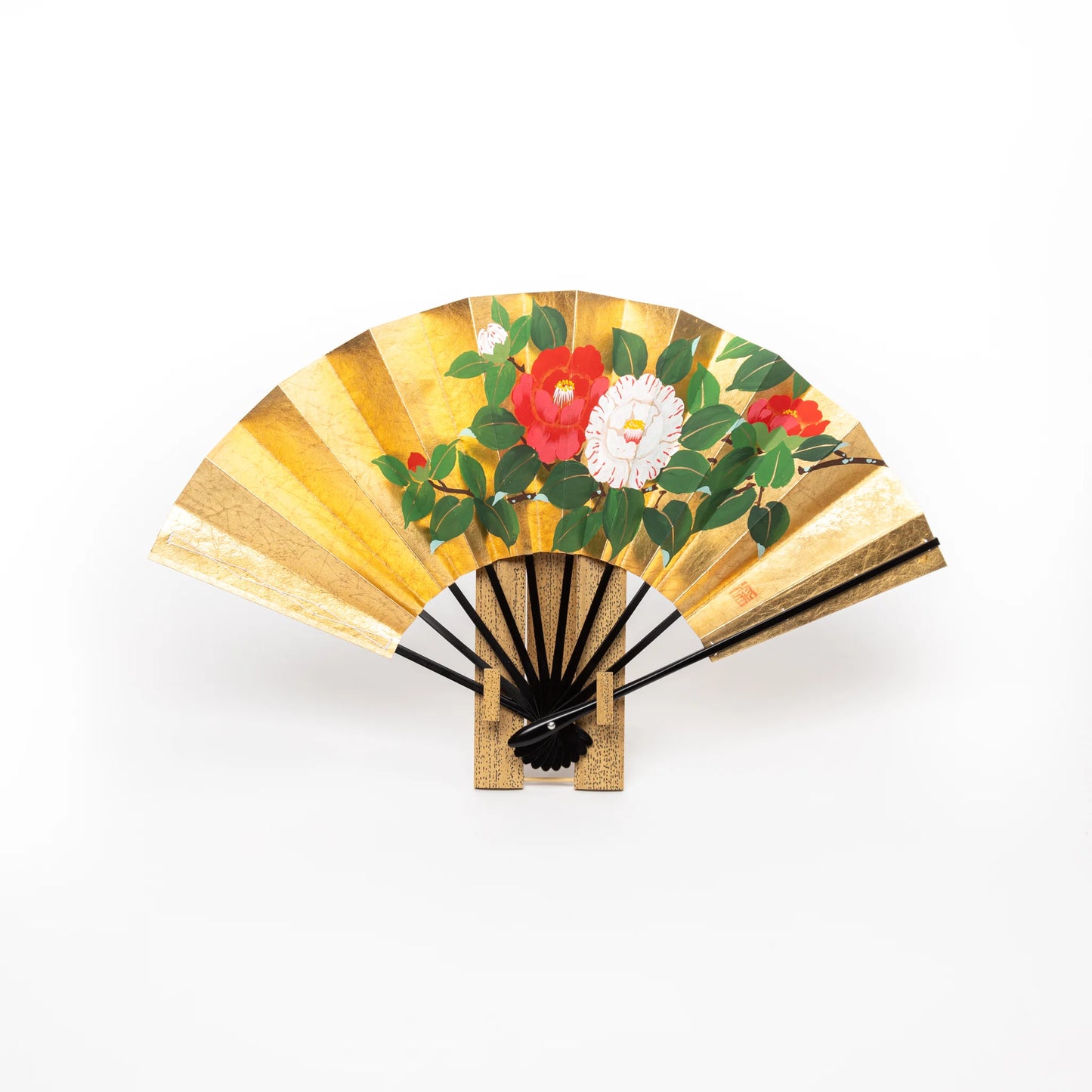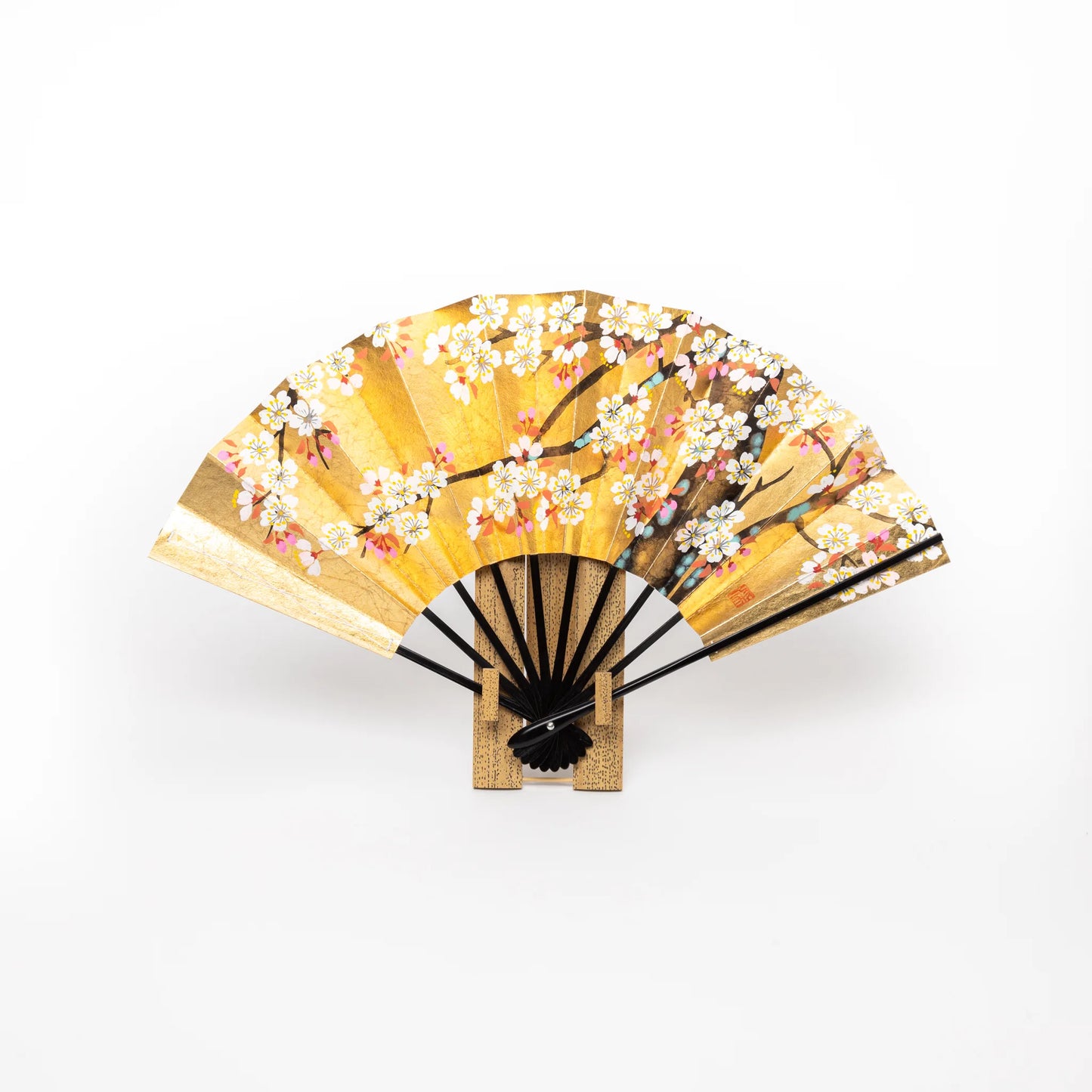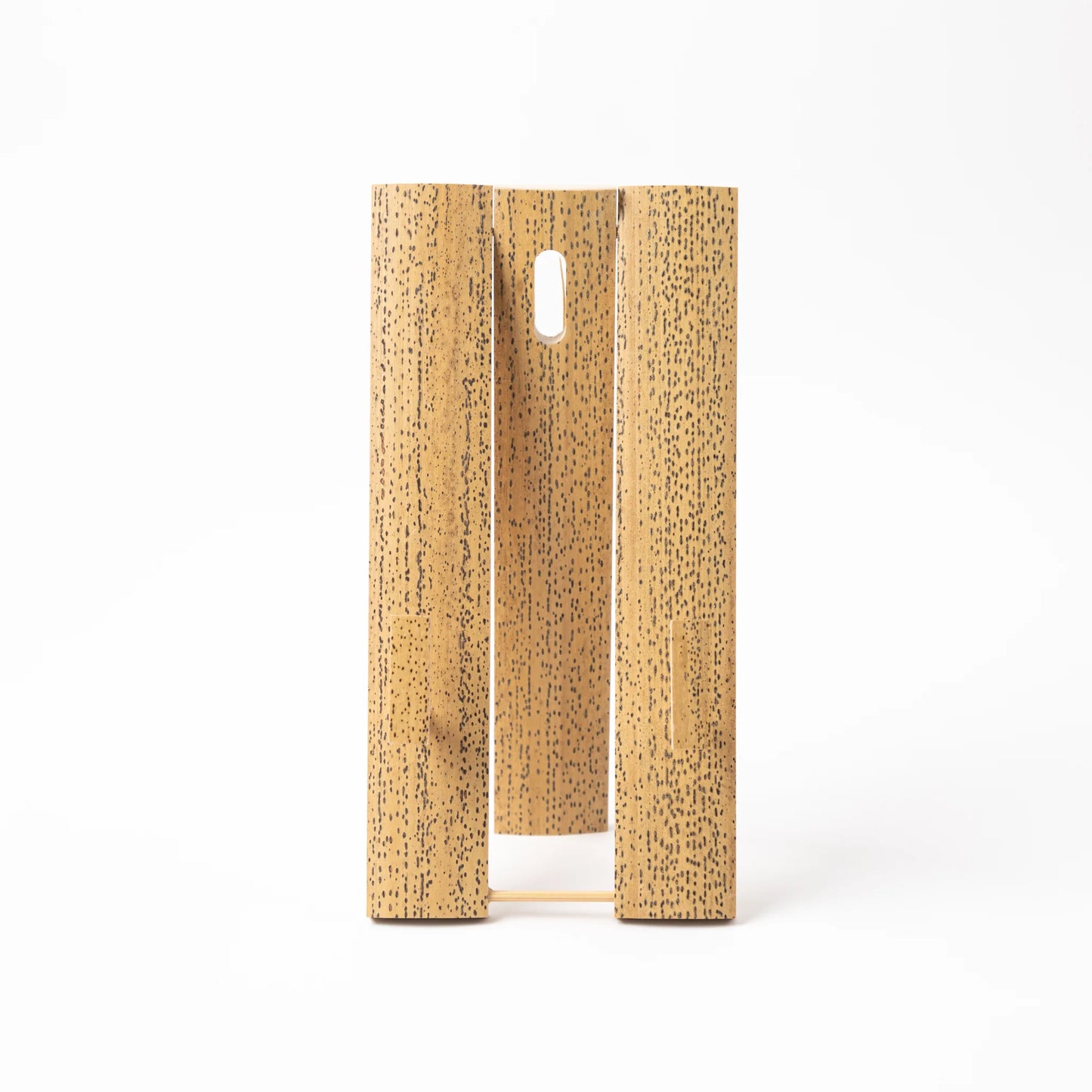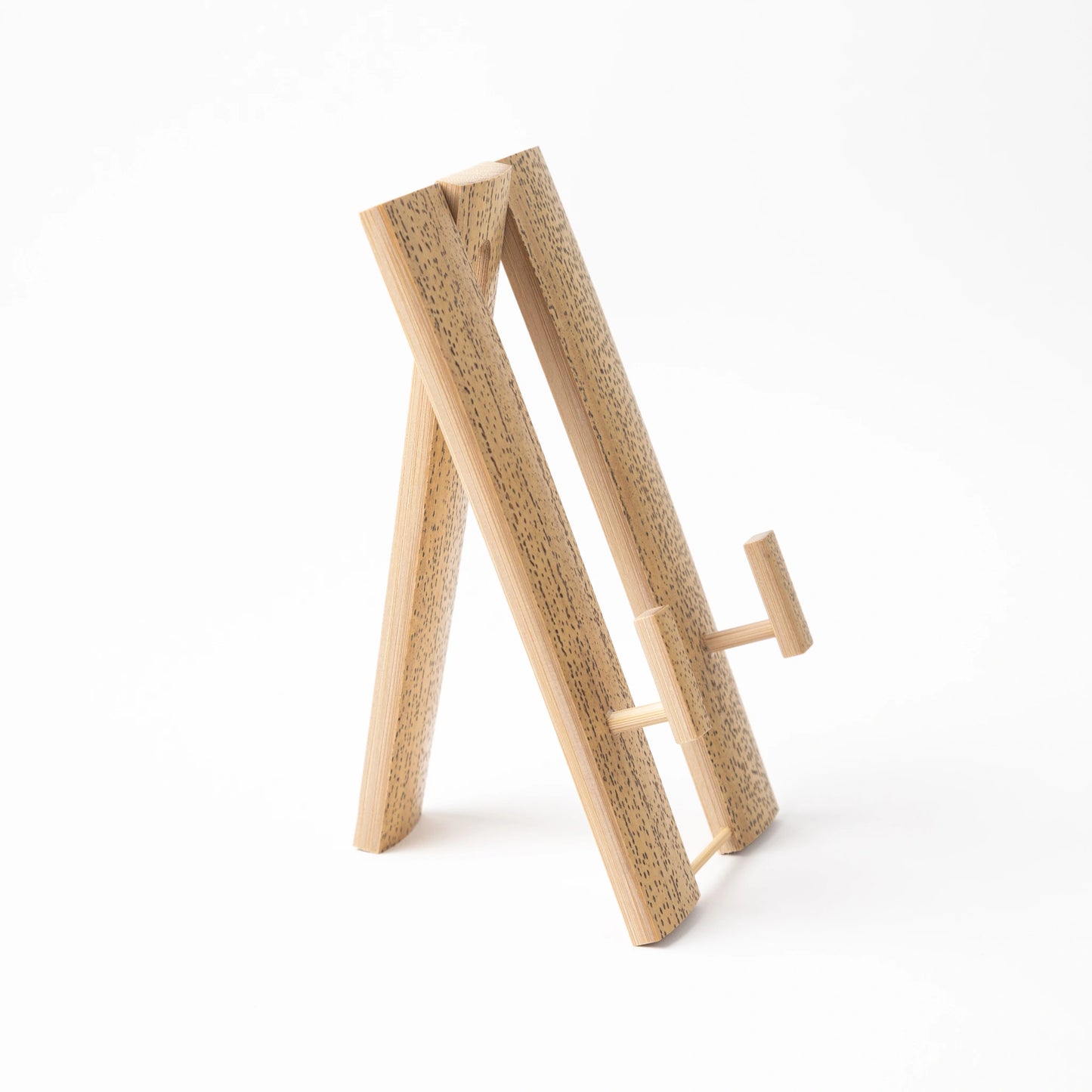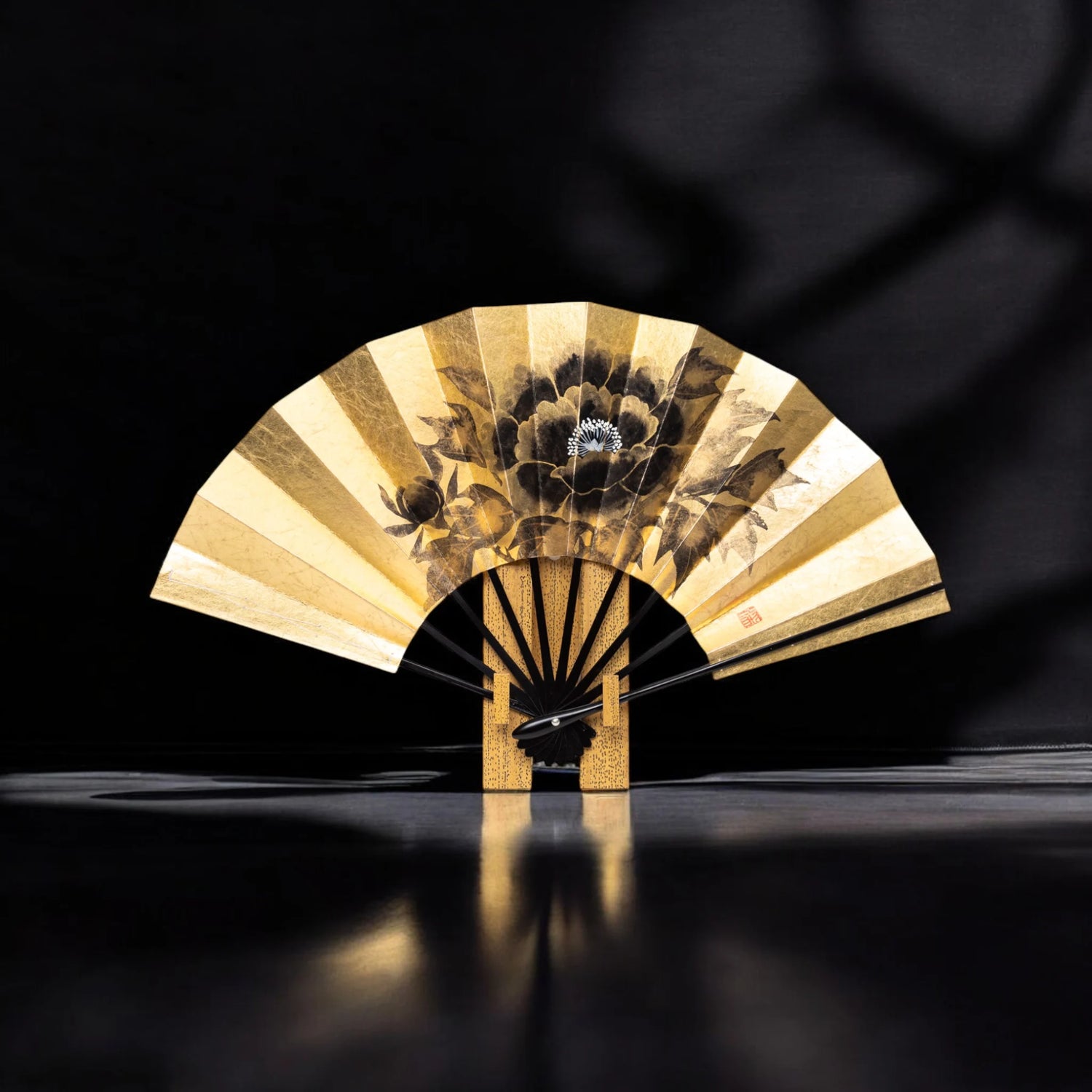Gold Foil Folding Fan Camellia and Cherry Blossom
Gold Foil Folding Fan Camellia and Cherry Blossom
Only 3 left in stock
Couldn't load pickup availability
Celebrate the harmony of nature with this exquisite gold foil folding fan featuring handpainted camellia and cherry blossom motifs. Crafted by skilled artisans, each fan showcases a meticulous balance of seasonal elegance and timeless Japanese artistry. The shimmering gold foil background elevates the vibrant floral imagery, making it a captivating centerpiece for display or performance.
Highly regarded as one of the most prestigious fans for classical Japanese dance, this mai-sensu (dance fan) embodies grace and sophistication. Its dual design, with camellia on one side and cherry blossoms on the other, offers versatility and symbolic depth—camellias representing strength and beauty, and cherry blossoms celebrating life's fleeting beauty.
Perfect for collectors and cultural enthusiasts, the fan also includes a stand, ideal for displaying its artistry in your home.
Detail
Detail
Care & Use
Care & Use
- Check our tips for care & use.
